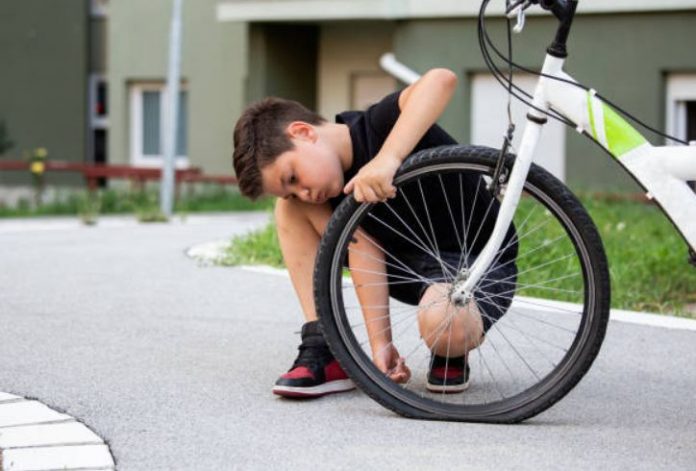An experienced bicyclist’s motto is (or should be) “never walk home“. Flat tires, broken chains, and bent frames are just some of the mechanical problems that a rider can encounter when they are out for a ride.
Experienced riders learn quickly that there are not too many mechanical problems that can stop a resourceful and determined individual.
A cyclist should always be prepared to fix the most common breakdown, a flat tire. A simple tire repair kit should include a tube, a couple of tire levers to aid in removing the tire, a patch kit, and a pump.
The cyclist should also be prepared to repair a tire cut which leaves the tube exposed to the ground.
This repair can be made by cutting a 1×1-inch piece of old tube or even by bringing along a dollar bill that can cover the cut temporarily during the ride home.
So what happens if the cyclist flats and does not have a patch kit or an extra tube? Each cyclist should carry an air pump so the tire can be periodically inflated and the ride continued.
A slow leak can be annoying but you can add air each time the tube softens. Fast leaks will have to be sealed.
A small piece of duct tape can be used as a temporary patch. The tube will still leak but you should be able to use the “pump and ride” approach that is used with any slow leak.
If you do not have the tape to repair a fast leak you can locate the hole and place this area outside the tire bead when remounting the tire.
This exposes the tube to the ground but when the tube is pumped up the tire seals the tube. The tube will bulge outside the tire but it should not blow off the rim unless it is overinflated.
Another technique is to fold the tube back on itself inside the tire so the hole is covered. When the rider pumps up the tire the overlapping tube slows the leak.
So what happens if the rider gets a flat, and has no extra tube, and most importantly does not have a pump to inflate the tube?
This is when riders must be resourceful and creative. The rider can stuff grass and weeds inside the tire.
The more grass the better, as that will help keep the rim from making rough contact with the ground.
In the event the bicycle tire gets ruptured and will not stay on the rim then the cyclist will be left with no choice but to ride on the rim.
This makes for a tricky ride but it is possible and should not damage the rim too severely. Rear flats on road bikes will likely cause the most rim damage.
The rider should be able to get the bike home while riding slowly and staying off the seat as much as possible.
A cyclist always runs the risks of mechanical problems like flats. These problems can be corrected with a little ingenuity and resourcefulness, even when they find the tools available lacking for the task at hand.

